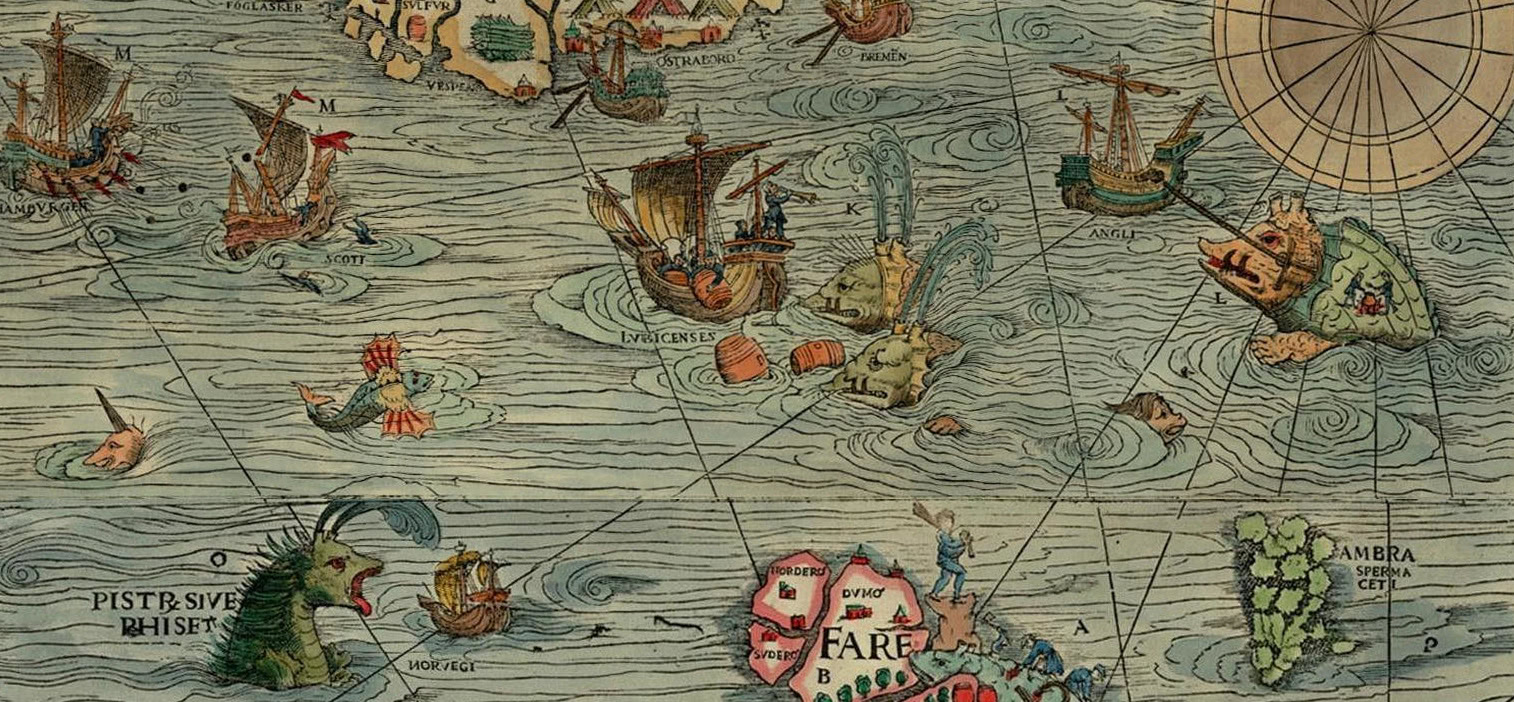Insurance and risk: some history
The Code of
Hammurabi is a Babylonian
law code dated from around 1750 BC. It consists of 282 laws dealing
with all aspect of public life, citizen’s rights and obligations and the
Babylonian kingdom’s justice system. The laws were inscribed on a stone
stele (shown below) in honor of the king Hammurabi and on a number of
clay tablets. The stele, discovered in 1901 in the south-east of
Iran,The stele originally stood in Babylon (today in Iraq),
but was most likely taken from there to Persia by the winner of some
war.
is today exposed at the Louvre Museum in Paris. Written
in cuneiform script and Akkadian language,You can “browse” the cuneiform script and its
translation online.
it is one of the oldest deciphered writings of
significant length in the world.

Several aspects of the code are remarkable, and quite modern:However, many aspects of the Hammurabi Codex seem
rather harsh to a modern reader. In particular, the punishments listed
are often quite gruesome, being “ancestors” of the “eye for an eye”
principle of the Old Testament.
The law code is written to be accessible to the general population, instead of in an opaque manner that would restrict its understanding to a small elite group.Professions and groups of experts often tend to develop a specific vocabulary concerning their area of interest. The use of specialized language (for example, many technical areas use many acronyms) can be useful, in allowing knowledgeable group members to express things more concisely and precisely than if they were using common language. However, it is also used as a cultural marker for group members to show that they have invested in learning relevant information, and as a barrier to the entry or a way of excluding newcomers.
The code explicitly recognizes the principle of equality of people before the law. It contains perhaps the first declaration of human rights in history: “To cause justice to prevail in the land […] that the strong may not oppress the weak […]”.
Several laws are explicitly designed to treat issues related to risk.
Risk management in the Hammurabi codex
Some laws in the Code of Hammurabi specify the professional responsibilities of builders and engineers:
If an engineer/builder builds a house for someone, and does not construct it properly and the house falls in and kills its owner, then that engineer shall be put to death.
If the house ruins goods, he shall make compensation for them, and shall re-erect the house at his own expense.
This has the effect of aligning the incentives of the builder with
those of the client (the future occupant), which leads to a high
likelihood that buildings are safe.It is “interesting” to contrast the situation at this
time, in which a builder presumably made huge efforts to ensure that
buildings were safe, with the decisions of engineers and builders that
led to the use of cladding that was known to the manufacturer and to the
project engineers to be highly flammable and dangerous (but cheaper than
the non-flammable alternative) in the renovation of Grenfell Tower in
London that led to 72
deaths in 2017.
These laws that ensure decision-makers have “skin in the
game” have been called the “best
risk-management rule ever”.
Some laws cover the risks of extreme events affecting a financial loan:
- A borrower is not required to repay a loan if some disaster impairs his ability to repay. Types of events covered include flooding, inability to work and death.
Some laws cover risks related to a form of maritime insurance:
- If a merchant receives a loan to fund his shipment, he would pay the lender some money in compensation for the lender providing a guarantee that he would cancel the loan if the shipment sank or was stolen.
Maritime loans in ancient Rome
The Roman Empire, and particularly its large cities such as Rome, depended heavily on maritime trade, the only form of transport that could supply a sufficient supply of food to support a large (for the time) city population. However, shipping was a hazardous activity, with many boats lost to bad weather, technical failures and pirates. The Romans developed a maritime law that included insurance-related concepts to allow shippers to share the risk of their activity with other investors. Indeed, the concepts of risk and insurance are tightly related, and in fact in etymological terms, the term “risk” derives from the Italian word “risco”, which means “that which cuts”, and refers to reefs that could damage the hulls of cargo ships [Ewald 1991].
For instance, a shipper could finance an expedition by setting up a
“loan” backed by the ship hull (a class of loans called “bottomry”). If the
ship were lost at sea, the lenders would lose their money; if the ship
arrived at port, the owner would pay the “resicum”, or interest on the
loan. This mechanism was socially advantageous for investors, because
Catholic and Muslim laws at the time forbade lenders from earning
interest on any loans, but allowed this more complex arrangement. It was
also advantageous to society in a broader sense, because it allowed a
progressive transformation of maritime shipping (and all the subsequent
benefits of trade) from a high risk, high return and low volume activity
to a less riskyThe risk reduced first was the financial risk borne by
investors, rather than the risk to life borne by seafearers. But by
increasing the commercial importance of this risk, more money and
attention became available to improve the level of safety of this
activity.
and higher volume activity.

Another form of collective insurance developed in the maritime domain
is the “law of
general average”, an ancient principle from maritime law. The idea
is that if a ship’s crew is obliged to throw some cargo overboard to
lighten the ship during a storm, all cargo owners will share the cost of
the lost cargo, and not only the owner of the goods lost at sea.More precisely, the modern formulation of the principle
is as follows: “There is a general average act when, and only when, any
extraordinary sacrifice or expenditure is intentionally and reasonably
made or incurred for the common safety for the purpose of preserving
from peril the property involved in a common maritime adventure” (York
Antwerp Rules, 2004). This language is used in freight contracts and
marine insurance policies.
The underlying principle is that in an emergency, no time
is available to haggle over which goods should be sacrificed to allow
the ship to be saved, so a general principle needs to be established in
advance, based on solidarity between all the ship stakeholders (they pay
in proportion to the value of their goods at the destination port). In
practice, this means that cargo owners, despite not choosing their
“partners” on a cargo ship, are jointly liable for the general averages,
and entrust the ship’s captain with authority on their behalf to
jettison their cargo.
Medieval guilds
During the Middle Ages, tradespeople (workers specialized in a specific craft or trade, such as masons, carpenters, ironworkers) were organized in organizations called guilds. The guild helped to develop the specialized technical knowledge associated with the profession, and young workers would be occupied as unpaid apprentices until they acquired sufficient skills. Each professional would pay a membership fee to the guild. If a guild member was affected by a fire or robbery, suffered a professional accident, or lived too old to work (not a very frequent “problem” in medieval times!), the guild would compensate the member or his family for the loss, a form of risk sharing that is similar to insurance. This mechanism was extended to become a general social insurance mechanism (often called “social security”) in a number of Western countries at the end of the 19th century [Ewald 1986].
Maritime insurance in the British Empire
The bottomry loans developed during the Roman times sometimes led to very high interest rates (up to 40%) to cover the risk of loss. The Catholic Church decided in the 1200s that sea loans were usurious (unethical loans that unfairly enrich the lender), and banned their use. Merchants adapted by setting up other forms of risk transfer, such as joint ventures where business risks were pooled and a dedicated marine insurance policy was established.
In the late 1600s, the British were increasing the amount of shipping
between England and the colonies. A London coffeehouse owned by Edward
Lloyd became the main meeting place for merchants and investors to
discuss insurance.This coffeehouse later developed its insurance-related
activity and gave its name to the large insurer Lloyd’s of London and to
the Lloyd’s Register ship classification and risk assessment firm.
Merchants would present a copy of the ship’s cargo, and
investors willing to cover risk of loss would sign at the bottom of the
documentThis is the origin of the term “underwriting”, the act
of writing under the name of the ship.
stating that they were prepared to assume a percentage of
the risk.
Insurers started assuming a risk prevention role at this time, working to share knowledge of good safety practices in the maritime industry, and developing quasi-regulatory activities. For example:
Lloyd’s Register popularized a technology called the plimsoll line, a reference mark on the ship’s hull indicating the maximum depth to which the vessel may be safely loaded with cargo. This helped observers check that boats arriving at ports were not overloaded.
The “underwriter’s knot” used in electrical wiring to reduce strain on terminal connections and the risk that pulling on the wire will lead to electrocution or a fire, was made popular by insurers (underwriters).
The Hartford Loop piping arrangement on steam boilers is a technique that helps equalize pressure and keep water inside the high-pressure system. It prevents boiler failures that can occur when the boiler ran out of water to make steam, for example due to a leak. It was invented in 1919 by the Hartford Steam Boiler Insurance Company, which required that this piping configuration be installed on all boilers it insured.
More information
- A much more detailed and richly illustrated historical analysis on insurance and reinsurance prepared by Swiss Re.
Published:
Last updated: